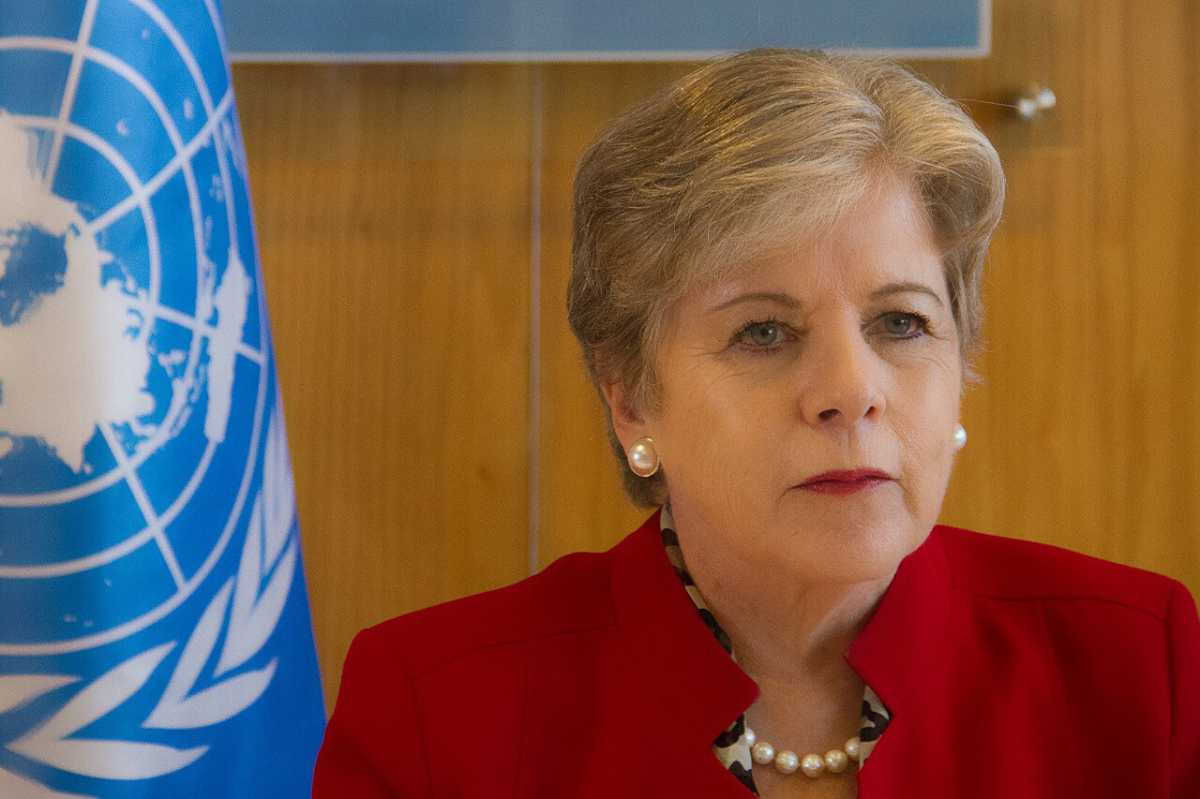The United Nations’ Economic Commission for Latin America and the Caribbean (ECLAC) predicted on Wednesday that the region will see its pace of growth decelerate in 2022 to 2.1 percent, after reaching 6.2 percent on average last year.
The new projections were unveiled during a virtual press conference held from Mexico City by ECLAC’s Executive Secretary, Alicia Bárcena.
ECLAC’s annual report, “Preliminary Overview of the Economies of Latin America and the Caribbean 2021”, says that this slowdown takes place “in a context of significant asymmetries between developed, emerging and developing countries, with regard to the capacity to implement fiscal, social, monetary, and health and vaccination policies for a sustainable recovery from the crisis unleashed by the COVID-19 pandemic.”
The document indicates that the region is facing “a very complex 2022: uncertainty regarding the pandemic’s ongoing evolution, a sharp deceleration in growth, continued low investment and productivity and a slow recovery in employment, the persistence of the social effects prompted by the crisis, reduced fiscal space, increased inflationary pressures and financial imbalances.”
“The expected slowdown in the region in 2022, combined with the problems of low investment and productivity, poverty and inequality, calls for growth and employment creation to be central elements of public policymaking while at the same time addressing inflationary pressures,” Bárcena said.
According to ECLAC, the 2.1 percent average growth foreseen for this year “reflects great heterogeneity” among countries and subregions.
The report says the Caribbean will grow 6.1 percent, excluding Guyana; Central America will grow 4.5 percent, while South America will expand by 1.4 percent.
In 2021, the report says the region experienced “higher-than-expected growth”, averaging 6.2 percent “due to the low baseline established in 2020, to greater mobility and to a favorable external context.”
According to the Preliminary Overview 2021, estimates point to advanced economies growing by 4.2 percent in 2022, “being the only ones to resume the growth trajectory foreseen before the pandemic over the course of this year.”
Emerging economies, meanwhile, are seen growing 5.1 percent in 2022, but the report says they will only resume the growth trajectory forecast before the pandemic in 2025.
In 2021, the report says 11 countries in Latin America and the Caribbean managed to regain the gross domestic product (GDP) levels seen prior to the crisis.
In 2022, the report says another three countries will join them, accounting for a total of 14 countries of the 33 that make up the region.
“It is of central importance that the combination of monetary and fiscal policies prioritizes growth stimulation, as well as inflation containment,” the report says. “This entails the need for coordinated fiscal and monetary policies and the use of all available instruments to adequately prioritize the challenges of growth with monetary-financial stability.”
In terms of the labor market, the report says employment recovered at a slower pace than economic activity last year.
It says 30 percent of the jobs lost in 2020 had not been recuperated by 2021.
Furthermore, the report says the inequality between men and women was “accentuated, reflecting the larger care burden on women and less dynamism in the sectors in which female employment is concentrated, such as services.”
In 2022, ECLAC projects an 11.5 percent unemployment rate for women – slightly below the 11.8 percent recorded in 2021, “but still well above the 9.5 percent existing before the pandemic in 2019.”
Unemployment among men is forecast at 8.0 percent this year, “nearly identical to that of 2021 (8.1 percent) and still far above the 6.8 percent seen in 2019,” the report says.
The report also addresses one of the most worrisome economic issues today at a regional and global level: the rise in the price of products and services.
In 2021, the report says inflationary pressures were observed in the majority of regional countries, led by price increases in food and energy.
The report says inflation reached 7.1 percent on average by November, excluding Argentina, Haiti, Suriname and Venezuela.
“These pressures are expected to continue in 2022,” the report says, adding that countries’ central banks anticipate that inflation levels will remain above the target range established, although they will tend to converge towards the end of 2022 or early 2023.
“Once again, the price of energy and food in international markets, along with the evolution of the exchange rate, will be critical to determining future price dynamics,” the report says.
It underscored that that inflation is “a multicausal phenomenon, which means that monetary authorities should continue utilizing the full range of instruments (monetary, foreign exchange and macroprudential) that they have, beyond the interest rate, to confront inflationary pressures without hindering the impetus for recuperating growth and employment and attaining sustainable, inclusive and more equal growth.”
In addition, the document emphasizes that it is “crucial to increase tax collection levels and to improve the tax structure to give fiscal sustainability to a growing trajectory of expenditure demands.
“The challenges foreseen in 2022 – including lower economic growth, the risks of higher interest rates, currency depreciations and the possible weakening of sovereign credit ratings – make fiscal policy management more complex,” it says.
“That is why a strategic vision for public spending is required that would link short-term demands with long-term investments and contribute to closing social gaps,” it adds.
Additionally, the report urges that fiscal space be expanded by eliminating tax evasion, which amounts to US$325 billion, or 6.1 percent of regional GDP; consolidating income taxes on individuals and corporations; extending the scope of taxes on assets and property; establishing taxes on the digital economy, environmental levies and others related to public health problems; and “progressively revising and updating royalties for the exploitation of non-renewable resources.”
The report says financing for development is also key for supporting policy spaces and investment.
“It is necessary to expand and redistribute liquidity from developed countries to developing countries; strengthen development banks; reform the international debt architecture; provide countries with a set of innovative instruments, aimed at increasing debt repayment capacity and avoiding over-indebtedness; and integrate liquidity and debt reduction measures into a resilience strategy geared towards building a better future,” the report says.

























